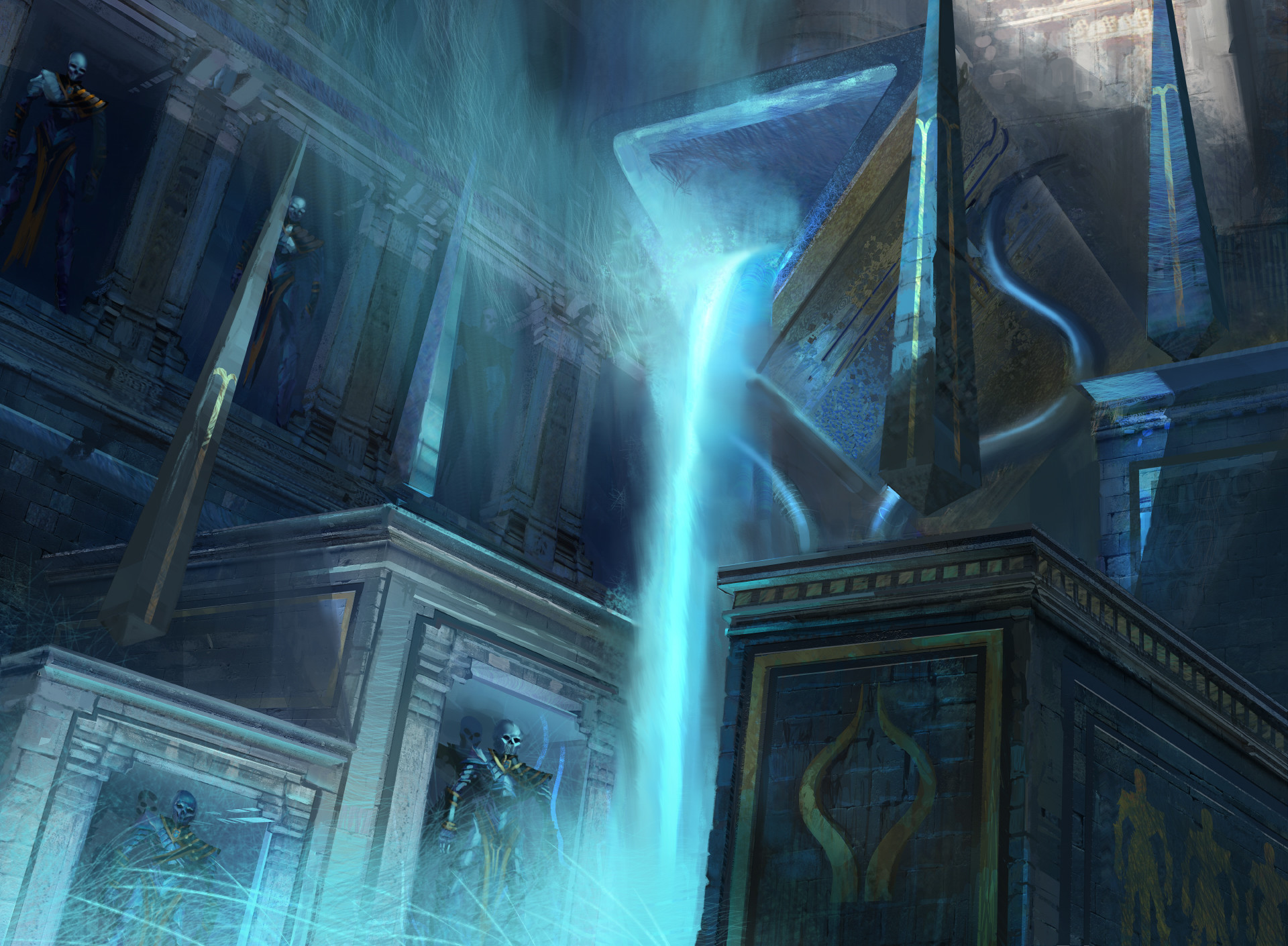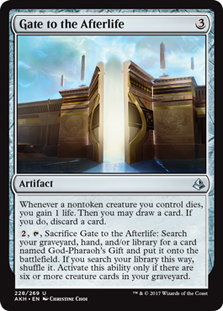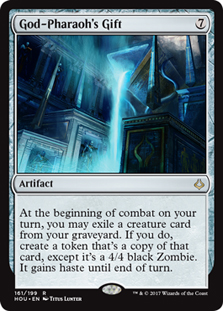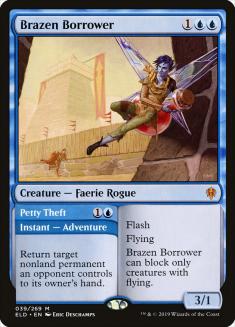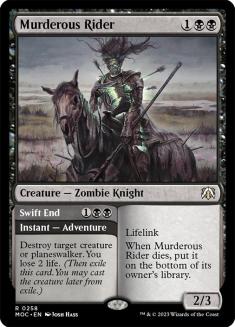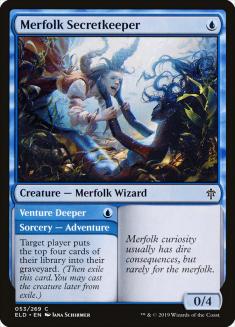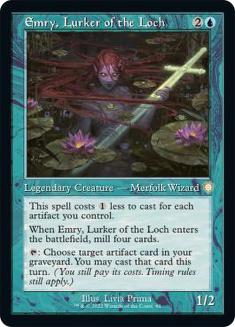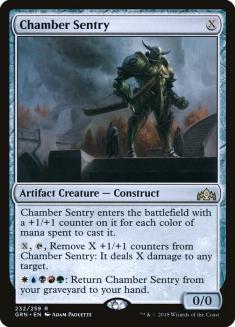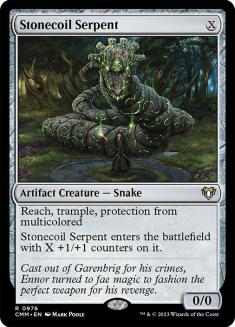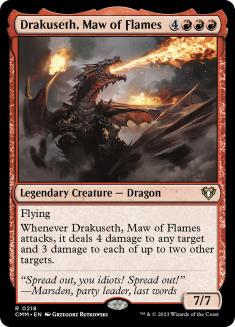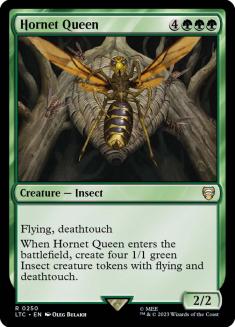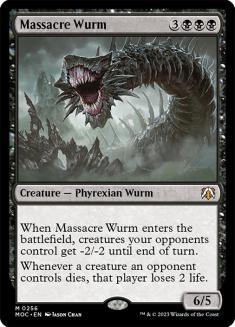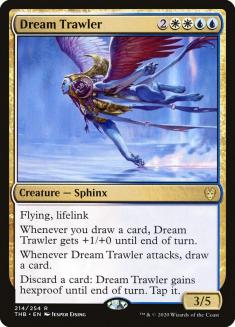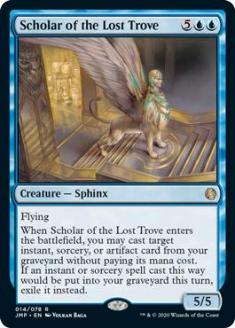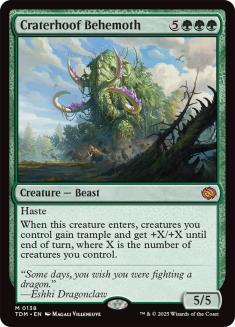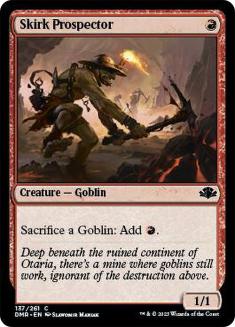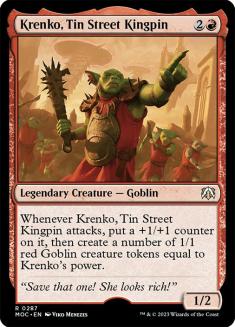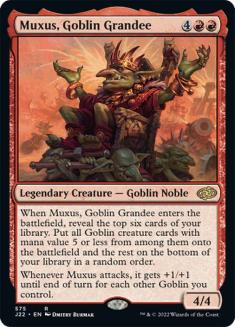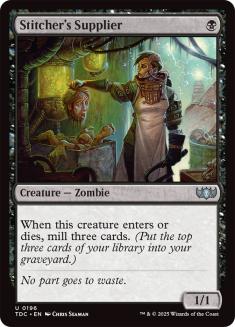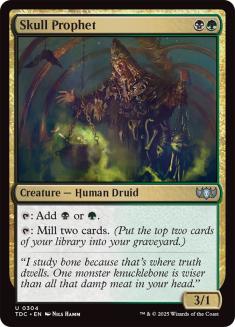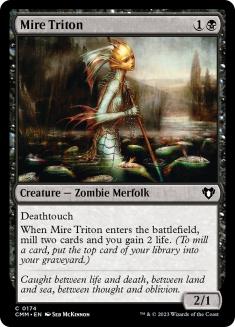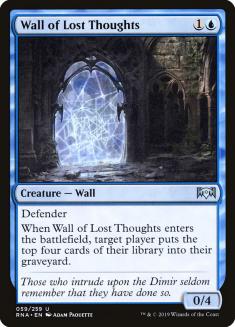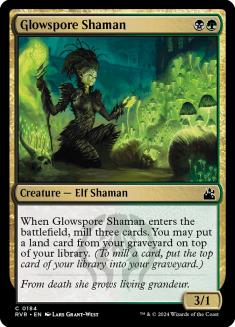Amonkhet Remastered came out just a week ago, and there’s still a ton of space being explored. Among the new tools that have been introduced to Historic is God-Pharaoh’s Gift, one of the most versatile synergy pieces in the format.
Most of what makes these cards so powerful is they have the same cost as a card like Winota, Joiner of Forces — have your deck be primarily comprised of creatures. Not exactly the highest bar to clear when most creatures have spells stapled to them.
I’m not just talking about the creatures that literally have instants attached to them, either
It isn’t that difficult to build a deck that’s chock-full of creatures and still gets to be interactive. God-Pharaoh’s Gift in particular is fantastic at paying its controller for playing with these kinds of cards because it helps weaker bodies translate to something beefier in the mid- and late-game.
One of the difficult things with something like God-Pharaoh’s Gift is weighing just how far one is supposed to lean into graveyard synergies when building the deck. Caleb Durward, for example, did a half-in/half-out approach with a good number of cards that are intended to fuel Gate to the Afterlife, while also including some midrange tools:
Creatures (31)
- 4 Champion of Wits
- 1 Hostage Taker
- 3 Ravenous Chupacabra
- 4 Chamber Sentry
- 1 Tomebound Lich
- 2 Drakuseth, Maw of Flames
- 4 Emry, Lurker of the Loch
- 4 Stonecoil Serpent
- 4 Brazen Borrower
- 4 Merfolk Secretkeeper
Lands (17)
Spells (12)

This deck introduces a few concepts that are important for building around Gate to the Afterlife, starting with cards that help make it tick.
The most dedicated God-Pharaoh’s Gift decks aren’t just looking to play a typical reanimator game. That’s to say it isn’t a matter of putting a couple of big creatures in the graveyard for Exhume or Unburial Rites to Unearth; density is important. This means that playing self-mill creatures is a gimme, because they both work as Tome Scours for filling the graveyard, while also being a body that the namesake artifact can upgrade in a pinch. The best one?
Emry, Lurker in the Loch both fuels the graveyard when necessary, and works to actually find copies of Gate to the Afterlife. The fact that it turns every mill effect in the deck into a way to hunt for Gate is a tool that a ton of these decks are happy to have.
The biggest strike against Emry is how hard it is to build a deck that can cast her for less than three mana without sacrificing a card quality in the process.
A trick that Caleb has made use of is the fact that Chamber Sentry and Stonecoil Serpent can have any converted mana cost. This means that a copy of one of these creatures on Turn 1 means a Turn 2 Emry. It can also be a way to generate extra loots off of Gate to the Afterlife when cast for zero.
Caleb’s list also trends toward a common practice in Reanimator strategies — uncastable payoff creatures.
Drakuseth, Maw of Flames is one of the best options in the format for having an impactful body to recur with God-Pharaoh’s Gift. Its inclusion makes a good bit of sense depending on what you’re planning on playing against. It’s not the only thing worth reanimating, however, and that choice is going to come down to what you’re expecting to play against.
The fact that there isn’t a one-size-beats-all comes down to the fact that there isn’t an Emrakul, the Aeons Torn or Griselbrand that can completely lock down a battlefield and kill the opponent in a single turn. So what do other great threats look like?
Hornet Queen is likely the best defensive tool against aggressive creature decks, as it’s effectively five Neck Snaps on a single card. The fact that God-Pharaoh’s Gift makes the Queen herself a 4/4 means that Questing Beast can’t even sneak past the colony in the way it normally can.
A personal favorite of mine, Massacre Wurm is great at punishing decks that try to win by flooding the battlefield with a ton of small bodies. Field of the Dead decks are the primary thing getting a nod here, as they play a reasonable enough control deck to take a couple of hits from a big creature directly to the chin before overpowering it with 30 2/2 Zombies.
Goblins being another major player in the format is another strike in Wurm’s favor.
- Catches back up on card advantage? Check.
- Can grow to a size larger than 4/4? Check.
- Discard outlet? Check.
Dream Trawler isn’t exactly the best at any single thing, but it does a great job at several things, especially when decks are looking to be able to do anything resembling a “normal” game when God-Pharaoh’s Gift isn’t going to happen:
Creatures (22)
- 1 Massacre Wurm
- 2 Hornet Queen
- 4 Champion of Wits
- 4 Stitcher's Supplier
- 4 Merfolk Secretkeeper
- 3 Dream Trawler
- 4 Scholar of the Lost Trove
Lands (24)
Spells (14)

One of the only variants of God-Pharaoh’s Gift that’s interested in playing more copies of the namesake than Gate to the Afterlife, this deck plays closer to what people expect when they hear “big-creature graveyard deck.” It’s able to get away with it because of one card:
Scholar of the Lost Trove provides a way for an Unburial Rites to translate to a copy of God-Pharaoh’s Gift on the battlefield. This means that there’s a chunk of games where it isn’t necessary to have a full graveyard in order to get the Gift onto the battlefield ahead of schedule.
The last incredibly attractive option to recur with God-Pharaoh’s Gift is Craterhoof Behemoth. After all, it being a single point of power and toughness smaller than normal when the amount the card is attacking for is frequently in the triple digits.
The biggest problem with Craterhoof Behemoth in God-Pharaoh’s Gift decks it that it’s a card that isn’t particularly good by itself, and doesn’t provide an effect or body that lend themselves to getting multiple triggers with God-Pharaoh’s Gift.
That’s to say that most God-Pharaoh’s Gift decks are looking to gain an insurmountable advantage by triggering God-Pharaoh’s Gift a couple of times and going from there. If the intent weren’t to trigger Gift multiple times, it would be easier to simply play Unburial Rites or something to that effect. Having a card that wins on the spot is the best case scenario, not what should always be expected.
Creatures (29)
- 4 Craterhoof Behemoth
- 2 Champion of Wits
- 4 Stitcher's Supplier
- 4 Gilded Goose
- 3 Emry, Lurker of the Loch
- 4 Merfolk Secretkeeper
- 4 Mire Triton
- 4 Skull Prophet
Lands (24)
Spells (7)

This deck, for example, is one that is doing everything it can to cheat a Craterhoof Behemoth onto the battlefield with God-Pharaoh’s Gift. It just… doesn’t seem that much better than simply playing the token-based Lukka, Coppercoat Outcast decks that are clearing fewer hurdles for a similar payoff.
Triggering God-Pharaoh’s Gift multiple times, however, doesn’t always mean taking multiple turns to do it.
Creatures (28)
- 4 Combat Celebrant
- 4 Vizier of Many Faces
- 4 Champion of Wits
- 4 Stitcher's Supplier
- 4 Priest of Forgotten Gods
- 1 Spark Double
- 4 Merfolk Secretkeeper
- 3 Mire Triton
Lands (24)
Spells (8)

Combat Celebrant is one of the handful of combo pieces that work specifically with God-Pharaoh’s Gift. Priest of Forgotten Gods can even get cheeky with the portion of Combat Celebrant that allows for multiple untaps, and can work as a turbo-God-Pharaoh’s Gift card when played with a pile of one drops.
This deck doesn’t exactly lend itself to a ton of flex slots, however. That’s the trouble with a lot of the decks that lean completely into God-Pharaoh’s Gift. Sure, the card is resilient to Grafdigger’s Cage, Containment Priest, and a good chunk of other cards that are used against Reanimator decks, but that doesn’t mean it’s the only angle of attack for a good chunk of these decks.
Creatures (30)
- 4 Gempalm Incinerator
- 2 Siege-Gang Commander
- 4 Skirk Prospector
- 2 Goblin Chieftain
- 4 Wily Goblin
- 4 Fanatical Firebrand
- 4 Goblin Instigator
- 3 Krenko, Tin Street Kingpin
- 3 Muxus, Goblin Grandee
Lands (5)
Spells (25)

With a name initially coined by Jim Davis, Gob-Pharaoh’s Gift is a real peanut butter-and-chocolate situation. Rather than having to jump through a ton of hoops to make Gate to the Afterlife happen, Historic Goblins incidentally plays a couple of cards that enable it by themselves.
Skirk Prospector was already one of the power cards in the original build of Historic Goblins, but each sacrifice generating a loot with Gate to the Afterlife is just kicking things into overdrive. Fanatical Firebrand shooting other Goblins is a trick right out of the Standard Gift decks’ playbook, but it’s for good reason — it represents a ton of creatures in the graveyard so quickly.
One of the most attractive things about this version of the deck is that it can reasonably expect to activate Gate to the Afterlife as early as Turn 3. That’s a lot.
Have you considered how strong Krenko can be with God-Pharaoh’s Gift? On top of getting a five-power attacker, it can generate a ton of mana just by virtue of producing bodies to sink into Prospector.
If the God-Pharaoh’s Gift thing doesn’t work out, I heard that Goblins have their own quick Turn 3 payoff:
All kidding aside, this is the area where synergy decks start to become the most powerful. Rather than having to sacrifice much in terms of card quality, they get to play their normal gameplan, with another incredibly powerful backdoor tool to fight games on another axis.
Only including a couple of copies of God-Pharaoh’s Gift in these decks is one of the main signs that it isn’t a necessity.
Creatures (32)
- 4 Desert Cerodon
- 4 Hollow One
- 4 Vile Manifestation
- 4 Drannith Stinger
- 4 Flourishing Fox
- 4 Valiant Rescuer
- 4 Drannith Healer
- 4 Imposing Vantasaur
Lands (13)
Spells (15)

Admittedly, this is stretching things a little bit, but Gate to the Afterlife provides another substantial payoff to compliment Zenith Flare. Historically, there have been two majors issues with Cycling decks — dead ends and anemic draws.
On one hand, incorporating the likes of Gate to the Afterlife and God-Pharaoh’s Gift into the deck is going to create more draws with dead ends. On the other hand, the ends aren’t dead if they have play to them. Most of the threats in the deck scale reasonably with God-Pharaoh’s Gift as well, which is nice considering the only thing worse than a Desert Cerodon is a 4/4 Desert Cerodon.
All the writing on Gob-Pharaoh’s Gift and Hollow One God-Pharaoh’s Gift is to say that the only cards that are truly required to build a God-Pharaoh’s Gift deck are creatures and the namesake artifacts.
The more the deck needs a God-Pharaoh’s Gift to go off, the more it needs the earlier creatures to directly contribute to making Gate to the Afterlife happen. In Historic, the list of creatures that self-mill before Turn 3 isn’t exactly a mile long:
This means most God-Pharaoh’s Gift decks that are built around the card are going to feature some combination of these cards at the bottom of their curve.
Finding two- and three-mana creatures that are able to play defensively and disruptively isn’t hard. Finding the best combination of them, on the other hand, is where it gets a bit more tricky. I’ve had success with Kitesail Freebooter as a disruptive tool, and like the Cauldron Familiar/Witch’s Oven combo to help justify playing Emry, Lurker of the Loch and create a way to kill off my own Stitcher’s Supplier. There’s a ton of moving parts available and refining it is a process.
The trick is trying everything and finding what sticks, no matter how harebrained it might look at a glance:
Creatures (35)
- 3 Massacre Wurm
- 4 Champion of Wits
- 2 Hostage Taker
- 3 Ravenous Chupacabra
- 3 Stitcher's Supplier
- 4 Priest of Forgotten Gods
- 4 Gilded Goose
- 4 Emry, Lurker of the Loch
- 4 Cauldron Familiar
- 4 Merfolk Secretkeeper
Lands (26)
Spells (19)


